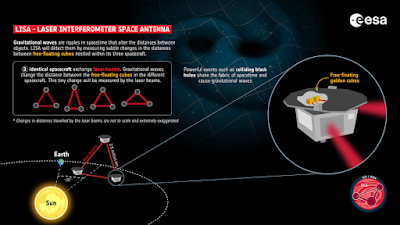Pascal Hilkens Astro Home Page
Thursday, April 4, 2024
ATT Essen: One month to go
Sunday, March 31, 2024
Sol'ex images : Impact of fps on X/Y ratio
According SIMSPEC SHG version V1.6, by Ken Harrison the theoretical result of X/Y ratio 1 should be 4.43ms or 225fps for my set up : TLAPO60/360 f/6 with ASI290MM and scanspeed 16x.
Sun H-Alpha using Sol'ex
* Speed 16x
Saturday, March 30, 2024
Comet 12P/Pons Brooks
Setting: TLAPO80/480 f/6 with ASI2600MC
Sol'Ex article in Magazine "Heelal"
Thursday, March 28, 2024
150.000 Visitors and Comet 12P/Pons Brooks
Celebrating 150.000 visitors since the start of my blog and I'm doing this with my picture I took this evening of Comet 12P/Pons Brooks.
Setting: TLAPO80/480 f/6 with Nikon D7500
Comet 12P/Pons Brooks with telelens
Image of Comet 12P/Pons-Brooks taken on Wednesday March 27. Some high clouds but still, when looking good you will recognize two tails.
Setting: Nikon D7500 f/5.6 200mm telelens, 39x2s on ISO12500. High ISO to prevent startrailing.
Stacking was done with APP 2.0.0 beta version 26. It took some time as settings were not correct.
Tuesday, March 26, 2024
Circumscribed Halo
Sunday, March 24, 2024
Jupiter, Mercury and Comet 12P/Pons-Brooks
Picture of Planets Jupiter and Mercury with Comet 12P/Pons-Brooks. The two pictures are single shots using my Nikon D7500 with my new tripod equiped with a ball head.
Astrometrica Software
Lecture by Prof Dr Hugues Sana on the search for black holes
 |
| Selfie with Prof Dr Hugues Sana |
Sunday, March 17, 2024
Sundials & Timedials
Bought this book second hand but never used. Let's see what this brings... building and understanding sun and timedials.
Saturday, March 9, 2024
First Light with Skywather Star Adventurer 2i
Space Weather workshop by Christine Verbeke
 |
| Selfie with Space Weather expert Christine Verbeke |
Sun H-Alpha and Ca-K using Sol'ex
H-Alpha : Tilt angle : -0.8067, Scaling SY/SX : +0.5077
Friday, March 8, 2024
Saturday, March 2, 2024
Sun Sol'ex Ca K and H-Alpha
A clear sky this morning for about 90 minutes, enough time to set up my Sol'ex and capturing the sun in H-Alpha and Ca K.
Some interesting prominences can be seen in both H-alpha as Ca K.
Setting: TLAPO 60/360 f/6, Sol'Ex with ASI290MM
Filter : Hoya 16
Saturday, February 24, 2024
Dell Wifi Issues - Great Dell Support
Only recently, my wifi connection was lost and when trying to reconnect no wifi networks could be found. Only when restarting I could reconnect to my wifi network. The problem was solved using Dell Support and looking for updates of my drivers. It seems that 5 drivers were outdated!
Lecture by Dr. Hans Huybrighs on JUICE Mission
 |
| Selfie with Dr. Hans Huybrighs |
Together with my Helios collegue Walter I joined an interesting lecture on ESA's JUICE (JUpiter ICy Moon Explorer) mission. The lecture was given at the University of Maastricht as part of Studium Generale by Dr. Hans Huybrighs, Planet Scientist @ Dublin Institute for Advanced Studies.
Follow the journey of JUICE via this website with some spectacular Earth flybys :
- 20 August 2024 (6561km)
- 28 September 2026 (8645km)
- 17 January 2029 only 4649 km
Even more spectacular will be Europa Flyby in July 2032 with only 400km!!
Monday, February 19, 2024
Boarding Pass Viper
Sunday, February 18, 2024
Saturday, February 3, 2024
Selfie with Gerald Rhemann, Astronomy Photographer of the Year 2022
 |
| Winning Picture of Comet Leonard |
 |
| Selfie with Gerald Rhemann |
Sunday, January 28, 2024
Sunspot AR3559
Image setting: ND3.8, OIII filter, IR/UV blocking filter
Triple Stack of Baader Ca K Line filter on AR3559
Friday, January 26, 2024
ESA LISA gets Go-Ahead
LISA or Laser Interferometer Space Antenna mission, the first scientific endeavour to detect and study gravitational waves from space is approved by ESA's Science Programme Committee. The mission is planned for 2035.
Sunday, January 21, 2024
Flanders invests 21 million in Einstein Telescope
Good news... Flanders invests 21 million in the Einstein Telescope. The euroregion at the border between Belgium, Germany and the Netherlands will be "a place in the Champions League of the European economy" said our Minister Jo Brouns.
 |
| Selfie with Prof. Nick Van Remortel @ VVS Seminary (Oct 2023) |
Saturday, January 20, 2024
Sun in H-Alpha
It was a sunny day with high clouds and around 0°C. I was not able to make some flats and therefor it's not a great picture but still ... a couple of huge prominences and filaments.
Setting: SolarMaxIII 70/400 f/5.7 DS BF15 and 0,5x reducer with ASI290MM
Exposure : 1000 frames @ 81,86fps or 5.08ms using SSD, binning 1x1
Saturday, January 13, 2024
Horsehead and Flame Nebula : H-Alpha and L-Pro Filter
My session of the Horsehead and Flame Nebula earlier this week (see this link) was stacked with my session in H-alpha done in March 2022 (see this link).
Guiding : ASI290MM on Guiding scope ZWO Miniscope 30f/4
Filter : Optolong L-Pro; Lights : 24x300s; Flats (10x0,35s), Darks(5), Bias (5), DarkFlats (10)
Filter : H-Alpha; Lights 2x600s, 10x300s
























.jpg)


















